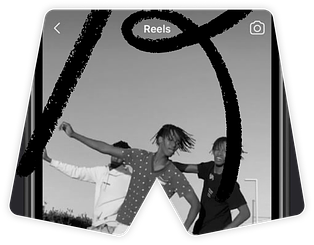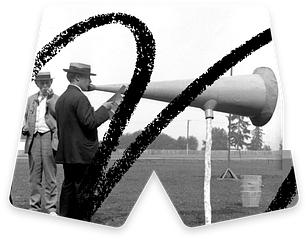Hey! Welcome to Three Shorts, a recurring series where I unpack the strategy behind the news in as few bullet points as possible. This is a free preview of a Divinations Premium post.
Enjoy :)
Instagram’s redesign — aggressive! 😯
What happened?
Last week Instagram added “Reels” and “Shop” to the app’s homescreen, which is used by over 500m users daily.
Both Reels and Shop originally launched in the US this summer, buried behind a few taps in the “Explore” tab.
Predictably, users are unhappy with the change. The replies here are pretty savage, but perhaps beauty vlogger James Charles summed it up best: “I hate it here.”
Why? What’s the strategy?
The goal is to get people to try Reels and Shop, obviously.
But why such an aggressive move? Facebook seems to believe:
A — TikTok is an existential threat, and
B — Commerce is a massive opportunity
In other words, Reels is defense, and Shop is offense.
Reels
TikTok users spend an average of 52 minutes on the app each day. On Instagram, the average is just 27 minutes— less than half!
This is a huge problem for Facebook, because these apps play a similar role in users’ lives, and they’re competing for a finite pool of attention.
If Instagram monetized through subscriptions, it wouldn’t be a big deal if their users spent 20% less time in the app because of TikTok. But with an ad-based model, that’d lead to a ~20% drop in revenue, which would be a huge problem.
So — Instagram’s goal is to catch up to TikTok’s network effect, by any means necessary.
Right now, Reels has fewer people creating and consuming content than TikTok, which means their algorithm has less data to learn from, and a worse pool of content to select videos from. This makes the consumption experience worse, which means less people use it, which means the reward for creating good content is smaller.
It’s a vicious/virtuous cycle, depending on whether you have the scale advantage or not — a classic pattern for network effect businesses.
Now is a critical moment for Instagram to do whatever it takes to make Reels work. The longer they wait, the more TikTok’s network effect grows, the harder it will be to catch up.
Shop
Unlike Reels, which defends against an existential threat, Shop is an offensive move to capture a nascent opportunity: product discovery.
If Shop becomes a compelling destination, their 5% transaction fees could transform Facebook’s ARPU (average revenue per user).
Another benefit of growing Shop revenue is that Facebook becomes less reliant on advertising for growth — a nice hedge in case TikTok continues to siphon attention from Facebook.
Will it work?
I reckon that something like a third of Instagram’s 500m DAUs will tap on the Reels and Shop tab for the first time now that they’re in the tab bar. (Just a wild guess.)
That’s a couple hundred million new users — powerful!
But while it’s easy to cause users to try, they’ll only stay if the experience is great. And I’m skeptical that Reels and Shop will have good retention in their current incarnation.
Reels
Based on my totally subjective experience of using it when it first came out this summer, and trying it again today, it feels like the quality of videos shown to me on Reels has tangibly improved.
...But it’s still a lot worse than TikTok. Oh, and approximately 50% of the videos actually have a TikTok logo in the corner. (The other half seem like clipped YouTube videos.) There’s not much native content.
As I wrote in August when Reels launched, “The biggest obstacle Facebook has to overcome to make Reels successful is that the type of content that makes TikTok amazing is the stuff people don’t want to post in an environment connected to their real-life friends.”
With Stories, Instagram could leverage their existing social graph. With Reels, they’re starting from scratch.
I honestly don’t think they’ll be able to catch up.
Shop
Shop is a different story.
The first version leaves a lot to be desired, but I think there’s a lot of simple things they can do that will make it a lot better.
For example, if they let users browse by category, as you can with any other online store (Apparel, Home, Kitchen, Outdoor, Jewelry, Paper Goods, etc), it’d make a huge difference.
Web Smith from 2PM put it well when he said, “Facebook is building the anti-Amazon.” It has the potential to be a creative space that inspires you to find great things.
Spotify’s Megaphone acquisition — underrated 👏
What happened?
Last Tuesday, Spotify announced that they acquired Megaphone for $235m.
Spotify has now spent a total of $831m on podcasting companies. (Previously they acquired Gimlet, Anchor, Parcast, and The Ringer.)
So, what is Megaphone? They’re one of the most popular podcast hosting platforms for large publishers like Vox Media, Conde Nast, Disney/ESPN/ABC, Bloomberg, and iHeartRadio.
Their signature functionality is the dynamic ad insertion technology. Publishers can insert their own programmatic ads, or let Megaphone sell dynamically targeted ads for them through their ad network.
Why? What’s the strategy?
When Spotify acquired Gimlet and Anchor last year, many observers assumed their plan was to drive paid subscriptions by making Gimlet podcasts exclusive.
<Redacted>
<Redacted>
(You get the idea)
The rest of this article unpacks the strategy behind Spotify’s acquisition of Megaphone, and Substack’s leaked new “Reader” interface.
My plan for the foreseeable future is to continue publishing Three Shorts every week. I’ll cover the strategy behind the news in the concise bullet-point format (what happened? why? what’s the strategy? will it work?) so you can start to train your neural net on the most important strategy frameworks while keeping up with latest happenings. Just like a ML algorithm can learn object detection or face detection, you will learn strategy detection.
Sound interesting?



